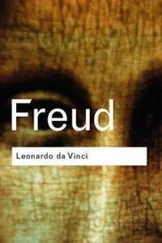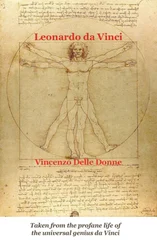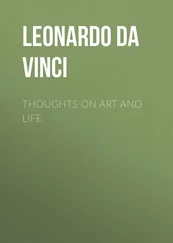Leonardo da Vinci - The Notebooks of Leonardo Da Vinci. Complete
Здесь есть возможность читать онлайн «Leonardo da Vinci - The Notebooks of Leonardo Da Vinci. Complete» — ознакомительный отрывок электронной книги совершенно бесплатно, а после прочтения отрывка купить полную версию. В некоторых случаях можно слушать аудио, скачать через торрент в формате fb2 и присутствует краткое содержание. Жанр: foreign_prose, foreign_home, visual_arts, foreign_antique, на английском языке. Описание произведения, (предисловие) а так же отзывы посетителей доступны на портале библиотеки ЛибКат.
- Название:The Notebooks of Leonardo Da Vinci. Complete
- Автор:
- Жанр:
- Год:неизвестен
- ISBN:нет данных
- Рейтинг книги:3 / 5. Голосов: 1
-
Избранное:Добавить в избранное
- Отзывы:
-
Ваша оценка:
- 60
- 1
- 2
- 3
- 4
- 5
The Notebooks of Leonardo Da Vinci. Complete: краткое содержание, описание и аннотация
Предлагаем к чтению аннотацию, описание, краткое содержание или предисловие (зависит от того, что написал сам автор книги «The Notebooks of Leonardo Da Vinci. Complete»). Если вы не нашли необходимую информацию о книге — напишите в комментариях, мы постараемся отыскать её.
The Notebooks of Leonardo Da Vinci. Complete — читать онлайн ознакомительный отрывок
Ниже представлен текст книги, разбитый по страницам. Система сохранения места последней прочитанной страницы, позволяет с удобством читать онлайн бесплатно книгу «The Notebooks of Leonardo Da Vinci. Complete», без необходимости каждый раз заново искать на чём Вы остановились. Поставьте закладку, и сможете в любой момент перейти на страницу, на которой закончили чтение.
Интервал:
Закладка:
81
HOW THE INNUMERABLE RAYS FROM INNUMERABLE IMAGES CAN CONVERGE TO A POINT.
Just as all lines can meet at a point without interfering with each other—being without breadth or thickness—in the same way all the images of surfaces can meet there; and as each given point faces the object opposite to it and each object faces an opposite point, the converging rays of the image can pass through the point and diverge again beyond it to reproduce and re-magnify the real size of that image. But their impressions will appear reversed—as is shown in the first, above; where it is said that every image intersects as it enters the narrow openings made in a very thin substance.
Read the marginal text on the other side.
In proportion as the opening is smaller than the shaded body, so much less will the images transmitted through this opening intersect each other. The sides of images which pass through openings into a dark room intersect at a point which is nearer to the opening in proportion as the opening is narrower. To prove this let a b be an object in light and shade which sends not its shadow but the image of its darkened form through the opening d e which is as wide as this shaded body; and its sides a b , being straight lines (as has been proved) must intersect between the shaded object and the opening; but nearer to the opening in proportion as it is smaller than the object in shade. As is shown, on your right hand and your left hand, in the two diagrams a b c n m o where, the right opening d e , being equal in width to the shaded object a b , the intersection of the sides of the said shaded object occurs half way between the opening and the shaded object at the point c . But this cannot happen in the left hand figure, the opening o being much smaller than the shaded object n m .
It is impossible that the images of objects should be seen between the objects and the openings through which the images of these bodies are admitted; and this is plain, because where the atmosphere is illuminated these images are not formed visibly.
When the images are made double by mutually crossing each other they are invariably doubly as dark in tone. To prove this let d e h be such a doubling which although it is only seen within the space between the bodies in b and i this will not hinder its being seen from f g or from f m ; being composed of the images a b i k which run together in d e h .
[Footnote: 81. On the original diagram at the beginning of this chapter Leonardo has written " azurro " (blue) where in the facsimile I have marked A , and " giallo " (yellow) where B stands.]
[Footnote: 15—23. These lines stand between the diagrams I and III.]
[Footnote: 24—53. These lines stand between the diagrams I and II.]
[Footnote: 54—97 are written along the left side of diagram I.]
82
An experiment showing that though the pupil may not be moved from its position the objects seen by it may appear to move from their places.
If you look at an object at some distance from you and which is below the eye, and fix both your eyes upon it and with one hand firmly hold the upper lid open while with the other you push up the under lid—still keeping your eyes fixed on the object gazed at—you will see that object double; one [image] remaining steady, and the other moving in a contrary direction to the pressure of your finger on the lower eyelid. How false the opinion is of those who say that this happens because the pupil of the eye is displaced from its position.
How the above mentioned facts prove that the pupil acts upside down in seeing.
[Footnote: 82. 14—17. The subject indicated by these two headings is fully discussed in the two chapters that follow them in the original; but it did not seem to me appropriate to include them here.]
Demostration of perspective by means of a vertical glass plane (83-85).
83
OF THE PLANE OF GLASS.
Perspective is nothing else than seeing place [or objects] behind a plane of glass, quite transparent, on the surface of which the objects behind that glass are to be drawn. These can be traced in pyramids to the point in the eye, and these pyramids are intersected on the glass plane.
84
Pictorial perspective can never make an object at the same distance, look of the same size as it appears to the eye. You see that the apex of the pyramid f c d is as far from the object c d as the same point f is from the object a b ; and yet c d , which is the base made by the painter's point, is smaller than a b which is the base of the lines from the objects converging in the eye and refracted at s t , the surface of the eye. This may be proved by experiment, by the lines of vision and then by the lines of the painter's plumbline by cutting the real lines of vision on one and the same plane and measuring on it one and the same object.
85
PERSPECTIVE.
The vertical plane is a perpendicular line, imagined as in front of the central point where the apex of the pyramids converge. And this plane bears the same relation to this point as a plane of glass would, through which you might see the various objects and draw them on it. And the objects thus drawn would be smaller than the originals, in proportion as the distance between the glass and the eye was smaller than that between the glass and the objects.
PERSPECTIVE.
The different converging pyramids produced by the objects, will show, on the plane, the various sizes and remoteness of the objects causing them.
PERSPECTIVE.
All those horizontal planes of which the extremes are met by perpendicular lines forming right angles, if they are of equal width the more they rise to the level of eye the less this is seen, and the more the eye is above them the more will their real width be seen.
PERSPECTIVE.
The farther a spherical body is from the eye the more you will see of it.
The angle of sight varies with the distance (86-88)
86
A simple and natural method; showing how objects appear to the eye without any other medium.
The object that is nearest to the eye always seems larger than another of the same size at greater distance. The eye m , seeing the spaces o v x , hardly detects the difference between them, and the. reason of this is that it is close to them [Footnote 6: It is quite inconceivable to me why M. RAVAISSON, in a note to his French translation of this simple passage should have remarked: Il est clair que c'est par erreur que Leonard a čcrit per esser visino au lieu de per non esser visino. (See his printed ed. of MS. A. p. 38.)]; but if these spaces are marked on the vertical plane n o the space o v will be seen at o r , and in the same way the space v x will appear at r q . And if you carry this out in any place where you can walk round, it will look out of proportion by reason of the great difference in the spaces o r and r q . And this proceeds from the eye being so much below [near] the plane that the plane is foreshortened. Hence, if you wanted to carry it out, you would have [to arrange] to see the perspective through a single hole which must be at the point m , or else you must go to a distance of at least 3 times the height of the object you see. The plane o p being always equally remote from the eye will reproduce the objects in a satisfactory way, so that they may be seen from place to place.
Читать дальшеИнтервал:
Закладка:
Похожие книги на «The Notebooks of Leonardo Da Vinci. Complete»
Представляем Вашему вниманию похожие книги на «The Notebooks of Leonardo Da Vinci. Complete» списком для выбора. Мы отобрали схожую по названию и смыслу литературу в надежде предоставить читателям больше вариантов отыскать новые, интересные, ещё непрочитанные произведения.
Обсуждение, отзывы о книге «The Notebooks of Leonardo Da Vinci. Complete» и просто собственные мнения читателей. Оставьте ваши комментарии, напишите, что Вы думаете о произведении, его смысле или главных героях. Укажите что конкретно понравилось, а что нет, и почему Вы так считаете.












